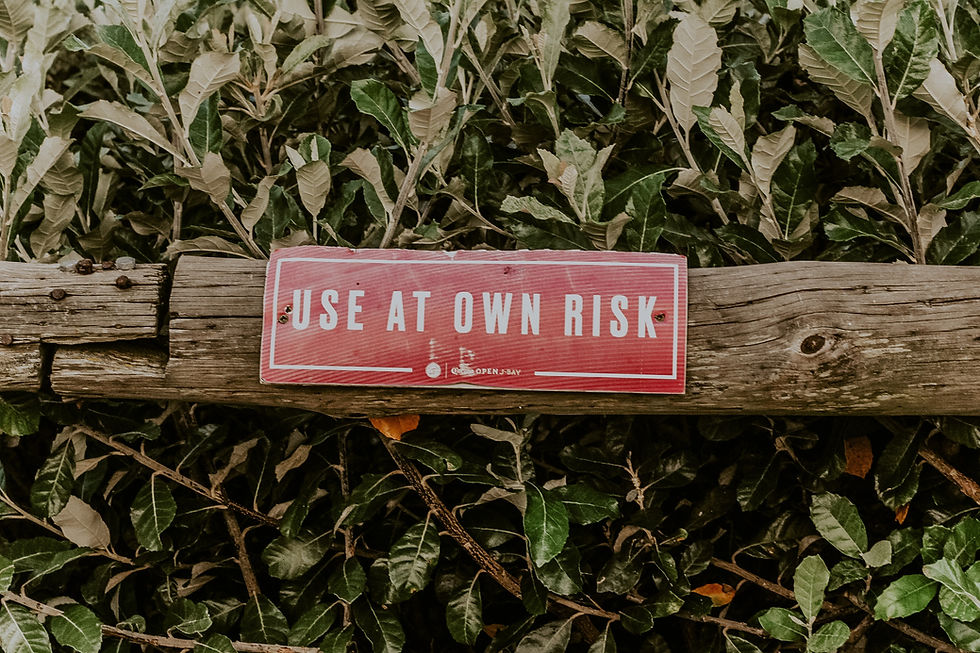The Smart Lucid Dreamer's Guide to Evaluating Sources
- The Lucid Guide

- Feb 13, 2023
- 3 min read
Updated: Aug 5, 2023
Lucid dreaming has become an increasingly popular topic in recent years, and wild claims are becoming rampant on social media and video sharing apps such as TikTok.

Sadly, with popularity comes an increase in false or misleading information.
It's absolutely essential for smart lucid dreamers to be able to distinguish between credible and unreliable sources. That's why I've created the "Lucid Dreaming Red Flag Checklist" which offers a useful list of tell-tale red flags to watch out for when evaluating information about lucid dreaming.
By being aware of these warning signs listed below, you can protect yourself from pseudoscientific claims and false promises, making sure you're getting accurate and reliable information about this wonderful state of mind.

The Lucid Dreaming Red Flag Checklist
If a source contains one or more of these red flags, it's highly likely you're dealing with an unreliable and antiscientific source.
Any one of these red flags should be considered a warning sign, and the higher the number, the more unreliable the source.
The promotion or sharing of binaural beats (or similar pseudoscience such as isochronic tones) as a means to induce lucidity. (reason: pseudoscience).
Claims that lucid dreaming can be used for physical healing. (reason: pseudoscience).
Discussing lucid dreaming alongside pseudoscientific concepts such as chakras, the third eye, astral/energy bodies etc. (reason: pseudoscience).
Claims that lucid dreaming can be used for astral projection or reality shifting. (reason: pseudoscience).
Claims that astral projection or reality shifting are genuine states. (reason: pseudoscience).
Claims promoting dream telepathy or clairvoyance. (reason: pseudoscience).
Obvious mistakes with lucid dream terminology (e.g. "MILD is a mantra technique"). (reason: misinformation).
Promises of easy lucid dreams without effort. (reason: misinformation).
Courses, e-books, or products that promise guaranteed lucid dreams or hidden secrets. (reason: misinformation / deceptive marketing).
Products are constantly on a sale or discounted. Often with countdown timers to pressure the user into an impulse purchase. (reason: deceptive marketing).
The misleading use of academic titles gained for unrelated subjects (e.g. a qualification in parapsychology or sport science). (reason: deceptive marketing).
The use of testimonials or anecdotal evidence as the sole proof of the validity of their claims. (reason: unverified claims / misinformation).
Using vague and unclear concepts, such as the use of "quantum physics" to explain the mechanics of lucid dreaming. (reason: misinformation / deceptive marketing).
Claims that are contrary to established scientific knowledge, such as claiming that lucid dreaming can be used to communicate with deceased loved ones. (reason: misinformation / pseudoscience).
Lack of credible sources or references to support their claims. (reason: unverifiable claims / misinformation).
Ignoring or dismissing valid criticisms or objections to their ideas and methods. (reason: censorship).
Using misleading or false information to promote their products, such as claiming that their technique is the only one that works. (reason: misinformation / deceptive marketing).
Overstating the benefits and downplaying the risks or challenges associated with lucid dreaming. (reason: misinformation).
Peddling "miracle cures" or "quick fixes" for complex problems such as depression, anxiety, or addiction. (reason: misinformation / pseudoscience).
Making exaggerated or unsupported claims about the potential of lucid dreaming, such as claiming that it can solve all of life's problems or give unlimited power. (reason: misinformation / pseudoscience).
Insisting on a one-size-fits-all approach to lucid dreaming, ignoring individual differences and unique needs. (reason: misinformation)
Encouraging the use of dangerous or harmful methods to induce lucidity, such as sleep deprivation or substance use. (reason: irresponsibility)
Promoting the idea that lucid dreaming can lead to psychic abilities or supernatural powers. (reason: misinformation / pseudoscience).
Focusing on making money rather than providing accurate and reliable information. (reason: greed).
Failing to acknowledge the limitations and potential risks of lucid dreaming. (reason: unrealistic / unverified).
Promoting the idea that lucid dreaming is a quick or effortless solution to complex personal or psychological problems. (reason: misinformation / pseudoscience).
Using misleading or false information about the history or origin of lucid dreaming to promote their ideas. (reason: misinformation / deceptive marketing).
Be Careful
The above warning signs are by no means a complete list of all possible red flags, but are among the most common.
It's important to be vigilant when looking to learn any new subject, and just because lucid dreaming may seem to be a somewhat intangible state, this doesn't mean that you should let your guard down.

Lucid dreaming, while otherworldly and amazing, still requires us to engage common sense and logical scrutiny.
Ultimately, it is your responsibility to assess the resources you rely upon. But I'd strongly recommend using the same due diligence you would employ when making other important or practical choices in your life.
If your choice in lucid dreaming resources require less assessment than you'd invest when choosing a plumber or in the purchase of a new car, it's probably time to dial-up your vigilance.



